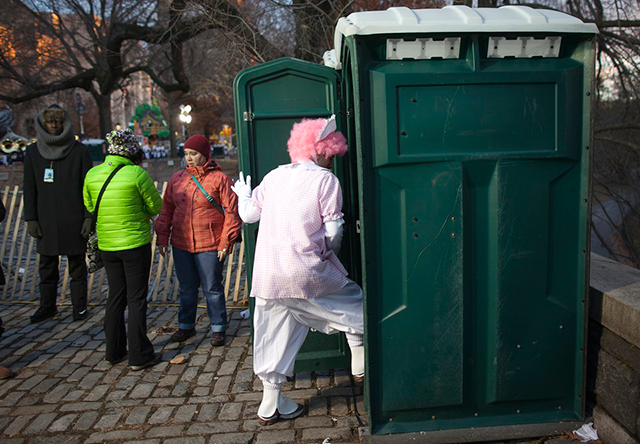A new study revises the most famous (and totally made up) “fact” about the microbiome.

We are, supposedly, outnumbered in our own bodies. We play host to an extraordinary menagerie of bacteria and other microbes – the microbiome – and it’s frequently said that these teeming cells outnumber our own by ten to one. This 10:1 ratio crops up everywhere. It appears in scientific papers, blog posts, magazine stories, TED talks, and popular science books – sometimes, even in the very title. It is undoubtedly one of the most famous statistics about the microbiome.
And it’s probably wrong.
It’s the result of a back-of-the-envelope calculation that became enshrined as hard fact based on little more than its catchy nature and its sounds-about-right-ness.
According to a new review by Ron Milo at the Weizmann Institute of Science, the correct ratio is more like 1:1. That is, in terms of cell counts, we and our microbes are equal shareholders. We’re not outnumbered after all. Indeed, as Milo so wonderfully writes, “the numbers are similar enough that each defecation event may flip the ratio to favor human cells over bacteria.” You gain temporary dominance over your own body with every flush.
In 2010, Elio Schaechter and Stanley Maloy traced the origins of the 10:1 ratio to a 1970 paper by microbiologist Thomas D. Luckey. With no supporting evidence of any kind, Luckey estimated that there are 100 billion microbes in a gram of intestinal contents (fluid or feces), and 1000 grams of such contents in an average adult – giving a total of 100 trillion microbes.
Eminent microbiologist Dwayne Savage then took this figure and, uncharacteristically, ran with it. In a 1977 paper, he contrasted these 100 trillion microbes with the 10 trillion human cells in our bodies – a figure pulled from a textbook that, again, cited no supporting evidence.
And so a made-up numerator was mushed on top of a made-up denominator, and a beautiful bouncing baby factoid was born.
In 2014, Judah Rosner from the National Institutes of Health drew attention to this “fake fact” in a letter to Microbe magazine. More recent estimates, he noted, put the total number of human cells at anywhere from 15 trillion to 724 trillion, and the number of gut microbes at anywhere between 30 trillion and 400 trillion. Which gives a ratio that can best be expressed as ¯\_(ツ)_/¯.
Milo’s team, including Ron Sender and Shai Fuchs, tried to improve on these figures. They thoroughly searched for studies that had actually tried to measure both the number of cells in different human tissues, and the number of microbes in stool samples (microbes in the gut overwhelmingly outnumber those on other body parts). They arrived at a grand total of around 39 trillion microbes and 30 trillion human cells. That’s virtually equal, or more specifically, 1.3 to 1.
These new estimates might be the best we currently have, but the studies and figures that Milo amassed come with their own biases and uncertainties. As Pat Schloss wryly noted on Twitter, “They went from a back of the envelope calculation to also use the front of the envelope.”
It’s also debatable if cell totals is a useful metric. After all, Milo's calculations show that 90 percent of human cells are red blood cells, which don't contain DNA and aren’t capable of dividing. They’re rather poor excuses for cells – remove them from the equation and the 10:1 ratio reinstates itself.
And who even cares about cell numbers? It’s likely that our microbes still wield many more genes than our own cells, and produce a wider array of chemicals. It’s also clear that they play vital parts in our lives, calibrating our immune systems, digesting our food, protecting us from disease, influencing the effectiveness of our medicines, and perhaps even affecting our behavior. This all stands, whether there’s one or ten of them to each of our cells. My preference would be to avoid mentioning any ratio at all – you don’t need to it convey the importance of the microbiome and scientifically, it’s not all that interesting.
It’s quite sociologically interesting, though. It reveals “the staying power of convenient falsehoods,” wrote Peter Andrey Smith in The Boston Globe. “Perhaps the crude estimate endures because it serves the practical purpose of astonishing those who hear it, in the same way that bogus Martian canals inspired a greater curiosity about the solar system, or the myth that all humans only access 10 percent of their brains might foster a greater appreciation for neuroscience.”
The fake fact, and Milo’s subsequent exercise in estimation, also reveal just how much we still don’t know about ourselves – both our human side and our microbial one. As Carl Zimmer notes, “The very fact that scientists are still so unsure of how many cells and bacteria are in each of us is pretty remarkable.”
